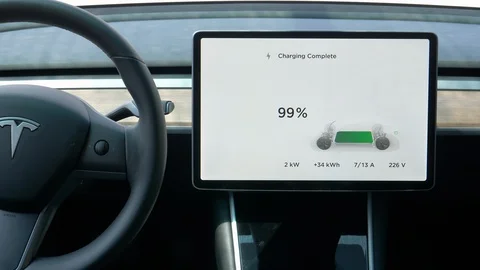In a world where urban landscapes are rapidly evolving, the intersection of artificial intelligence (AI) and electric vehicles (EVs) is steering us toward a new era of mobility. Did you know that by 2030, it’s estimated that over 30% of new vehicle sales will be autonomous electric vehicles? This staggering statistic, shared by Bloomberg Green, underscores the transformative impact AI-driven autonomous EVs are set to have on urban mobility. In this article, you’ll discover how these technological marvels are reshaping transportation, the environment, and our daily lives.
The Rise of AI in Electric Vehicles
How AI is Revolutionizing the EV Landscape
Artificial intelligence is at the heart of the autonomous vehicle revolution. From machine learning algorithms that enable cars to navigate city streets to advanced sensor technologies that detect obstacles, AI is the brain behind the operation. According to Wired, companies like Tesla and Waymo are leading the charge in integrating AI systems into their electric vehicle platforms.
- Machine Learning: This technology allows vehicles to learn from their environment, improving their decision-making processes over time.
- Computer Vision: Cameras and sensors work in tandem to give vehicles a 360-degree view of their surroundings.
- Natural Language Processing (NLP): Enables voice-activated controls, making the driving experience more intuitive.
Key Players and Innovations
Several major automotive brands are investing heavily in AI-driven autonomous EVs:
- Tesla: Known for its Autopilot feature, Tesla continues to push the boundaries with its Full Self-Driving (FSD) software.
- Volkswagen: The ID. BUZZ, a modern take on the classic microbus, is set to feature autonomous capabilities.
- BYD: This Chinese manufacturer is integrating AI to enhance battery performance and vehicle efficiency.
The Environmental Impact of Autonomous EVs
Reducing Urban Pollution
One of the most significant benefits of autonomous EVs is their potential to reduce urban pollution. According to the International Energy Agency (IEA), transportation accounts for nearly 24% of global carbon emissions. Transitioning to electric vehicles powered by AI can dramatically cut these emissions.
- Zero Emissions: Unlike traditional combustion engines, EVs produce no tailpipe emissions.
- Efficient Routing: AI optimizes driving routes, reducing traffic congestion and energy consumption.
Enhancing Energy Efficiency
AI-driven systems not only optimize driving but also improve energy efficiency. PV Magazine highlights how smart charging systems can integrate with renewable energy sources, maximizing the use of solar and wind power.
- Smart Charging: Schedule charging during off-peak hours to reduce costs and strain on the grid.
- Battery Management: AI algorithms extend battery life by maintaining optimal charging levels.
The Practicalities of Autonomous EVs in Urban Settings
How to Charge Your Autonomous EV
Charging infrastructure is crucial for the widespread adoption of autonomous EVs. Here’s what you need to know:
- Home Charging: Install a Level 2 charger for overnight charging convenience.
- Public Charging Stations: Use apps like PlugShare to locate nearby charging stations.
- Fast Charging: Some stations offer DC fast charging, replenishing your battery in minutes.
Where to Buy Your First Autonomous EV
If you’re ready to embrace the future, consider these options:
- Tesla Model 3: Known for its advanced AI features and impressive range.
- Hyundai Ioniq 5: Offers a blend of style, performance, and cutting-edge technology.
- Ford Mustang Mach-E: Combines the thrill of a Mustang with the efficiency of an EV.
The Future of Urban Mobility: What to Expect
Transforming Public Transportation
Autonomous EVs are not just limited to personal vehicles; they are also set to revolutionize public transport. Reuters Mobility reports that self-driving buses and shuttles are being tested in cities worldwide, offering a glimpse into the future of urban commuting.
Creating Smart Cities
As autonomous EVs become more prevalent, cities will need to adapt. This means integrating smart infrastructure, such as traffic management systems that communicate with vehicles to optimize flow and reduce delays.
- Traffic Management: AI systems can predict and manage traffic patterns in real-time.
- Parking Solutions: Autonomous vehicles can drop passengers off and park themselves, reducing the need for large parking areas.
Conclusion
The convergence of AI and autonomous electric vehicles is more than just a technological advancement; it’s a paradigm shift that promises to redefine urban mobility. As we look to the future, it’s clear that these innovations will lead to cleaner, more efficient, and more sustainable cities. Are you ready to embrace this new era of transportation? Share your thoughts and join the conversation on how AI-driven autonomous EVs can shape our world.
In the coming years, as technology continues to evolve, we can expect even greater integration of AI into our daily commutes. Whether it’s through improved safety features, increased energy efficiency, or smarter city planning, the future of urban mobility is bright, and it’s powered by AI-driven autonomous electric vehicles.

